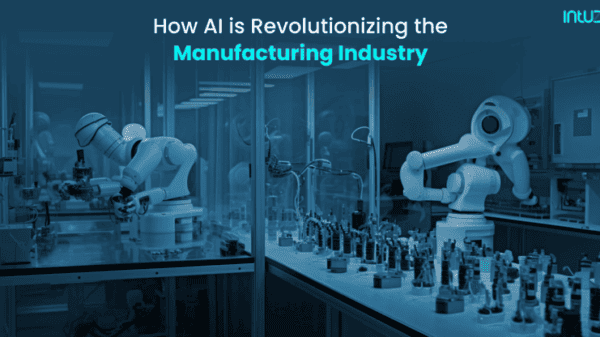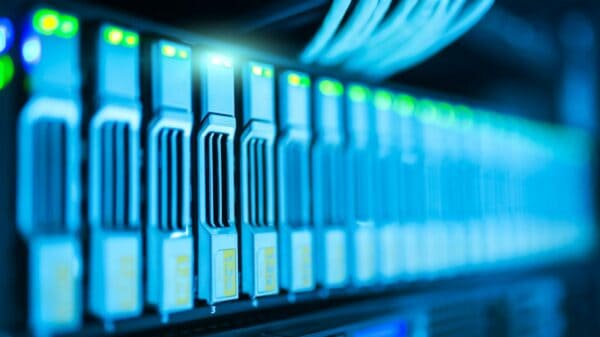Businesses across the world had to reimagine business operations throughout 2020 in response to the COVID-19 crisis. Sharing data over 5G and high-speed Wi-Fi networks, the IoT [Internet of Things]-enabled devices were instrumental in implementing real-time decisions to offer a safe customer experience and to relieve employee workloads.
Interestingly, it continues to generate opportunities in 2021 in several areas, including Industrial IoT [IIoT] and data integration in healthcare and workforce management, along with a rise in IoT development services and improving customer support.
IoT is set to impact our lives further as enterprises look forward to enhancing the security of IoT systems and generating better returns on investment.
The Worldwide Internet of Things Spending Guide indicates significant opportunities in around 20 industries led by manufacturing [Industry 4.0] and 81 named use cases.
Pandemic-fueled adoption rates are estimated to boost the growth of combined markets of IoT to about $520 billion this year.
Industry predictions for 2021 accentuate the importance of creating connected healthcare experiences and smart workplaces and improving location-based services. Adding to that, though, here are the key IoT predictions of 2021:

1. Connectivity clutter to continue
Technology leaders are perplexed with the diversity of communication solutions needed across IoT use cases. They are exploring the potential of connectivity options beyond 5G for efficiently running data-intensive processes.
Industrial and commercial users may consider shifting to Low-Power Wide-Area Networks (LPWAN) to ensure connectivity at a large scale. At the same time, Bluetooth Low-Energy (BLE) can effectively address small-scale IoT applications.
The lack of terrestrial infrastructure for remote use cases is expected to be addressed by Low Earth Orbit (LEO) satellites.
ABI Research anticipates around 24 million IoT connections to be made via satellite by 2024 and Software Defined Radio (SDR) technology to drive their competition towards cost-effectiveness.
It is predicted that industry experts will be more interested in discovering a feasible low-power networking solution to enable IoT through wireless technologies in 2021.
Forrester foresees an increase of around 20% in their interest levels as they have begun to acknowledge the pertinence of use case-based communication solutions for running IoT devices over one-size-fits-all.
2. Data-driven healthcare to boom
The COVID-19 outbreak has accelerated digital transformation, specifically the IoT development process, and has led to the adoption of this technology in the healthcare industry at an unanticipated rate.
Healthcare practitioners resorted to virtual checkups, remote medicine, and patient engagement tools to address undetected and uncontrolled health conditions and chronic diseases in these uncertain times—all thanks to IoT.
AI and IoT-driven wearables and sensor-based devices had enabled convenient at-home monitoring of patient health.
More consumers are interested in digital health care, as the uncontrollable propagation of coronavirus continues. They are becoming familiar with virtual visits and requesting their health care providers to adapt as well.
Industry analysts at Frost & Sullivan expect nearly 35% of patient interactions in 2021 to happen digitally alongside the growth of 20-25% in patient engagement management solutions.
Significant investments in the industry will be driven by tele-health services, digital diagnostics, robot assistance, and wearables or sensors for continuous monitoring of patients’ health.
Efforts would be oriented to strengthening IoT security to manage patient health information and data collected through remote medical equipment.
3. Smart workspaces to support employees
The majority of businesses across sectors are shifting their priorities to employee health and safety while investing in the IoT app development and utilization.
Responding to a poll conducted by Vodafone, around 84% of the companies confessed that IoT was instrumental in maintaining their businesses during the pandemic. Presumably, these “smart IoT” trends of 2021 will continue as the virus continues to mutate and proliferate.
New work practices will be designed around IoT-enabled workspaces. Maintaining hygienic working conditions by practicing social distancing and reducing surface contact will be mandatory this year.
Companies are upgrading offices with IoT powered devices such as thermometers, sensor-enabled conference or meeting rooms, remotely accessible coffee machines, and smart lights to normalize return-to-work for their staff.
Besides aiding in controlling the spread of coronavirus, analyzing data collected through these IoT applications can improve profitability. Vodafone reports 87% of businesses that have adopted IoT agree, it generates value and ROI for them though it has disrupted their core business strategy.
4. More complex IoT gateways to rise
IoT gateway helps bridge physical devices or software programs to the cloud, controllers, sensors, and intelligent devices. Over time, they have evolved to complex IoT system gateways as the simple end-point data capture devices have been replaced with large scale IIoT projects.
Intricate system gateways efficiently resolve interoperability, redundancy, connectivity, data pre-processing, and aggregation.
IoT gateways drive digital innovation from enterprise to home-level with applications in on-demand manufacturing, just-in-time inventory, remote monitoring, edge computing, cloud data storage, and process orchestration.
They are connecting devices over IT networks to facilitate optimal performance in OT [operational technology] environments.
Laying down the importance of IoT Gateways for security, ABI Research anticipates the number of IoT gateway shipments to exceed 64 million units in 2021.
The demand for IoT gateways is bound to increase steadily with technical advancements from wired to wireless devices and a rise in demand for Big Data analytics.
5. Location-based customer and workforce management to rule
Pandemic-induced physical distancing and stay-at-homes norms spiked online ordering for essential items and other retail industry products.
Location data is being gathered through GPS enabled devices like smartphones, and other opportunities are being explored. The data is being used to target customers and enhance their experiences with the brand.
As the pandemic continues to roil the world in 2021, businesses are prepared to serve customers through virtual queues, curbside pickup, and digital checking in for reservations through robust IoT development.
An industry insight report by Fortune Business Insights projects the global IoT in the Retail Market to reach USD 28.9 Billion by 2026. Similarly, a remote workforce is being managed through cloud platforms over wireless networks.
IoT-integrated Mobile Workforce Management systems deliver real-time and accurate communication across teams connected over the cloud.
Embedded mobile systems and sensors help managers streamline operations through resource planning, tracking employee productivity, and ensuring compliance.
IoT-enabled remote management services offer a seamless workflow for the precise delivery of products to boost profitability.
6. Real-time data processing with the edge to improve
IoT would be implemented at nearly half the enterprises across the globe by 2022, forecasts the 2018 State of the Industry report. As the IoT ecosystem continues to flourish, enterprises are looking for robust and efficient data processing approaches.
Edge computing addresses their needs by offering data processing near its source, reducing latency and bandwidth consumption. It provides the shortest, safest, and quickest route for data transmission and storage.
It runs on smart AI algorithms and minimizes the need to share data on the cloud. Edge computing-based IoT systems combined with mobile computing are highly cost-effective, and they enable real-time communication and supervision of automated devices.
Way forward
The future of IoT is bright as it will continue to influence technology leaders to re-strategize business processes and allow enterprises to enhance the customer experience and offer convenience to employees. Powered by efficient networking technologies, higher returns, and improved security, IoT is set to generate better business opportunities in 2021 and beyond.
Patrick R, A techno-commercial leader heading Intuz as Director of Growth With over 12 years of experience in the field of Information Technology. His experience and expertise will entice developers and business entrepreneurs with rich content on latest technology stack. Visit for more information: https://www.intuz.com/























































































































































































